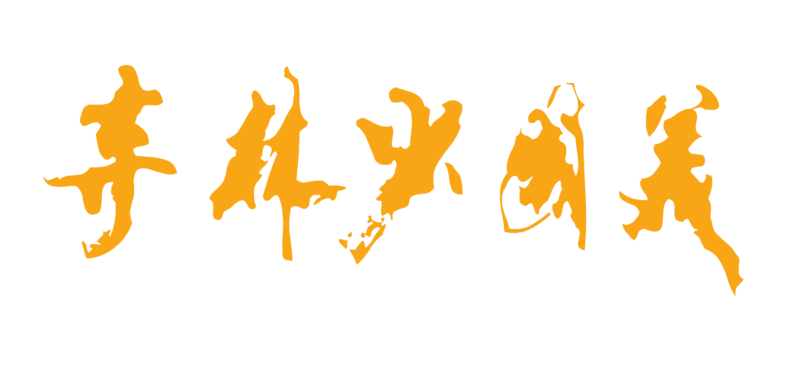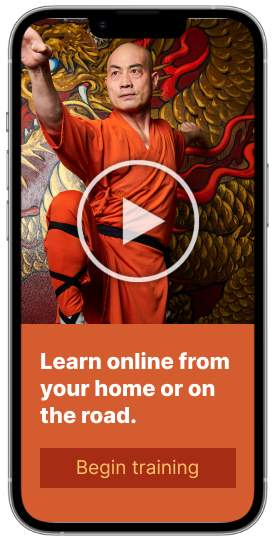Noho Warrior Monk Fights for Strong Minds, Bodies
January 24, 2007
 –The Villager
–The Villager
By Judith Stiles
Shaolin Monk Shi Yan Ming’s parents had three children who died of starvation, and when he became ill, his parents sold their last worldly possession, a fountain pen, to buy medicine. The treatment did not work, and as his parents were preparing to bury him in China’s rural Henan province, they serendipitously met a poor acupuncurist on the side of a road who miraculously cured him with only a few needles.
Soon afterward, Shi Yan Ming began a lifelong spiritual journey, when he was accepted as a disciple in a Shaolin temple in northern China at the tender age of 5. Little did he know that this path would eventually lead him to the other end of the earth, the heart of Chinatown in New York City, where he has devoted his life to sharing his knowledge of martial arts and Chan Buddhism with any person, of any age or body type, even those with no related experience.
In 1994 Shifu (“Master”) Shi Yan Ming, a 34th-generation warrior monk, opened his first U.S.A. Shaolin Temple over a grocery story in Chinatown with less than 10 students. Now he has an extensive schedule of daily classes, including kung fu, tai chi, chi kung, open meditation and Chan Buddhism in his new location at 446 Broadway off of Howard St.
In an unobtrusive second-story loft, more than 30 students recently attended a Saturday kung fu level-one class, where they began the sessions with saying “Amituofo,” a greeting that is a common way of paying respect to Buddha. Then, like the energy of a great wave breaking on the shore, the students began a series of continuous fast-paced kung fu moves, leaping, turning, thrusting, kicking, as they seemed to dance across the room in roughly three lines. Dressed in loose-fitting dark blue pajama-like garments, some with sneakers that had “Train Harder, More Chi” inscribed on the sides, they sailed across the room creating an electric energy of rhythmic motion.
There was no leader in the lines, no prescribed sequence of exercises, only an occasional joyous shout of “More chi! Fo!” even “Happy New Year!” There was no belt ranking system and no testing of students, as U.S.A. Shaolin promotes a noncompetitive environment, grounded in the pure joy of learning kung fu and other martial arts.
“If you want to learn how to beat people up, this workout will be of no use,” said Shifu of his teachings. “Here we develop a clear mind, a strong body and sharp reflexes. Life is beautiful!” he added.
In loose-fitting orange clothes, Shifu joined in with the students, initiating a movement that looked like a running scissors kick with both arms stretched forward, followed by a quick thrust of the head backward. The men and women in all shapes and sizes made no eye contact with each other as they zipped through the movements in three mesmerizing lines.
Kung fu is considered the most aerobic of the arts offered at U.S.A. Shaolin Temple. Although tai chi was originally often considered a fighting art, today most people study the slower, more fluid movements to stimulate the movement of chi — or life force — and to develop physical and mental health.
The movements in chi kung are similar to yoga, and according to the Shaolin Web site, usashaolintemple.com, “Chi kung strengthens the body and unblocks the flow of chi. Students begin with a soft chi kung form that was created by Bodhidharma to help rejuvenate the monks after hours of seated meditation.”
As a young monk, Shi Yan Ming believed his mission was not to be a typical Buddhist monk, cloistered away from the modern world. Rather, he knew he was born to spread the knowledge of Chan Buddhism and martial arts in different countries and to all kinds of people. Shifu has opened Shaolin temples with 35th-generation disciples, such as Shi Heng Tong in South Africa, as well as other sites in Austria, Mexico, Tobago and Chile.
In his spare time he travels to the other temples, and at home, he lovingly paints and repairs the new, spacious Shaolin Temple on Broadway; it sports five columns, each one circled by exquisite, painted dragons, and in the front of the temple there is a beautiful collection of Buddha statues, wooden artifacts, exotic plants and a wooden chair carved out of a single piece of wood.
Having worked many late nights on beautifying the temple, he recently has adopted the hardcore New Yorker custom of grabbing a cup of Starbucks coffee to start his day.
“Keep your life simple,” Shifu advises his fellow New Yorkers, adding, “A healthy body is a healthy mind. Eat very good food, don’t waste food. A meal is a gift, and life is a gift,” he said with a smile, before dashing off to begin another class.






